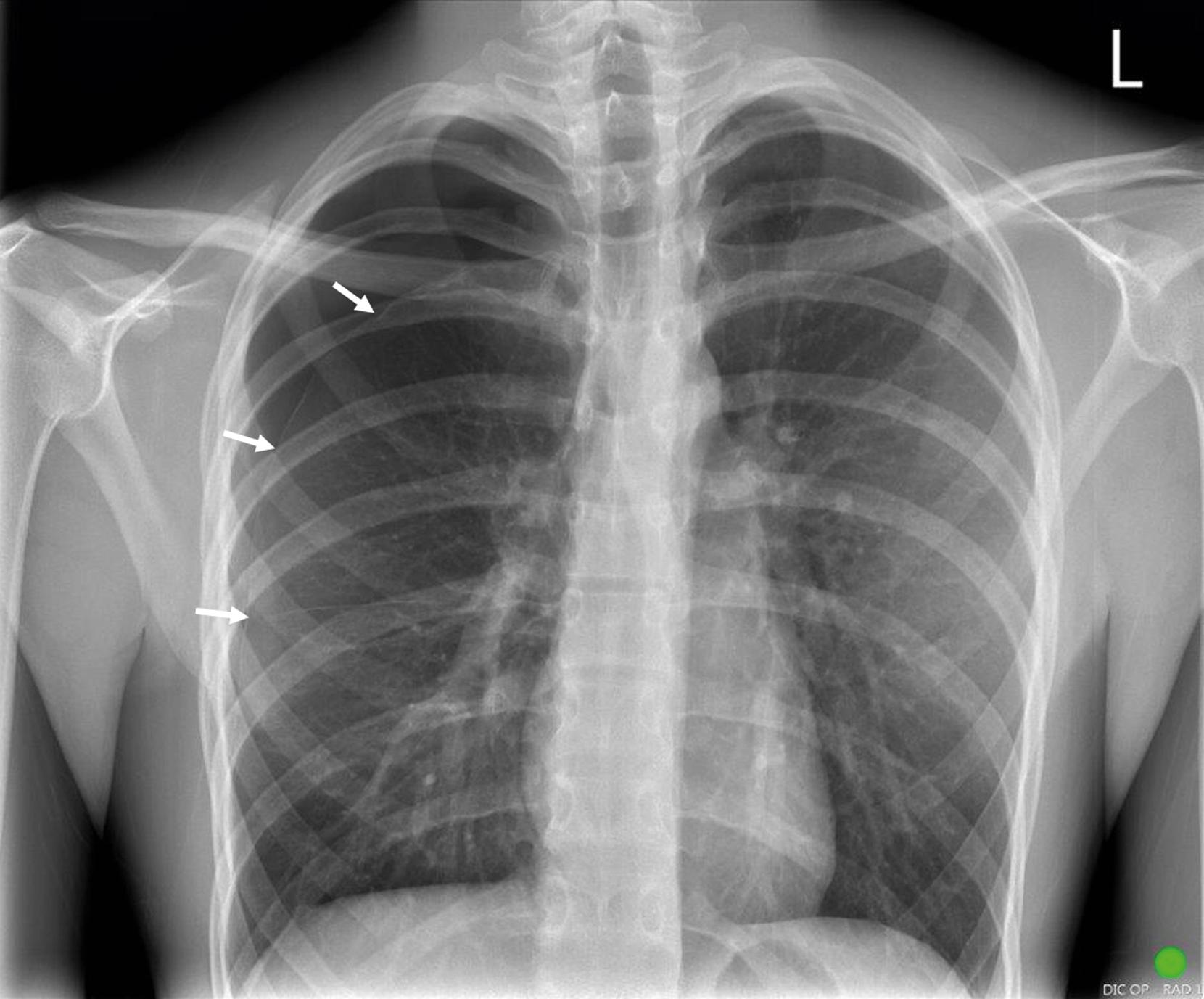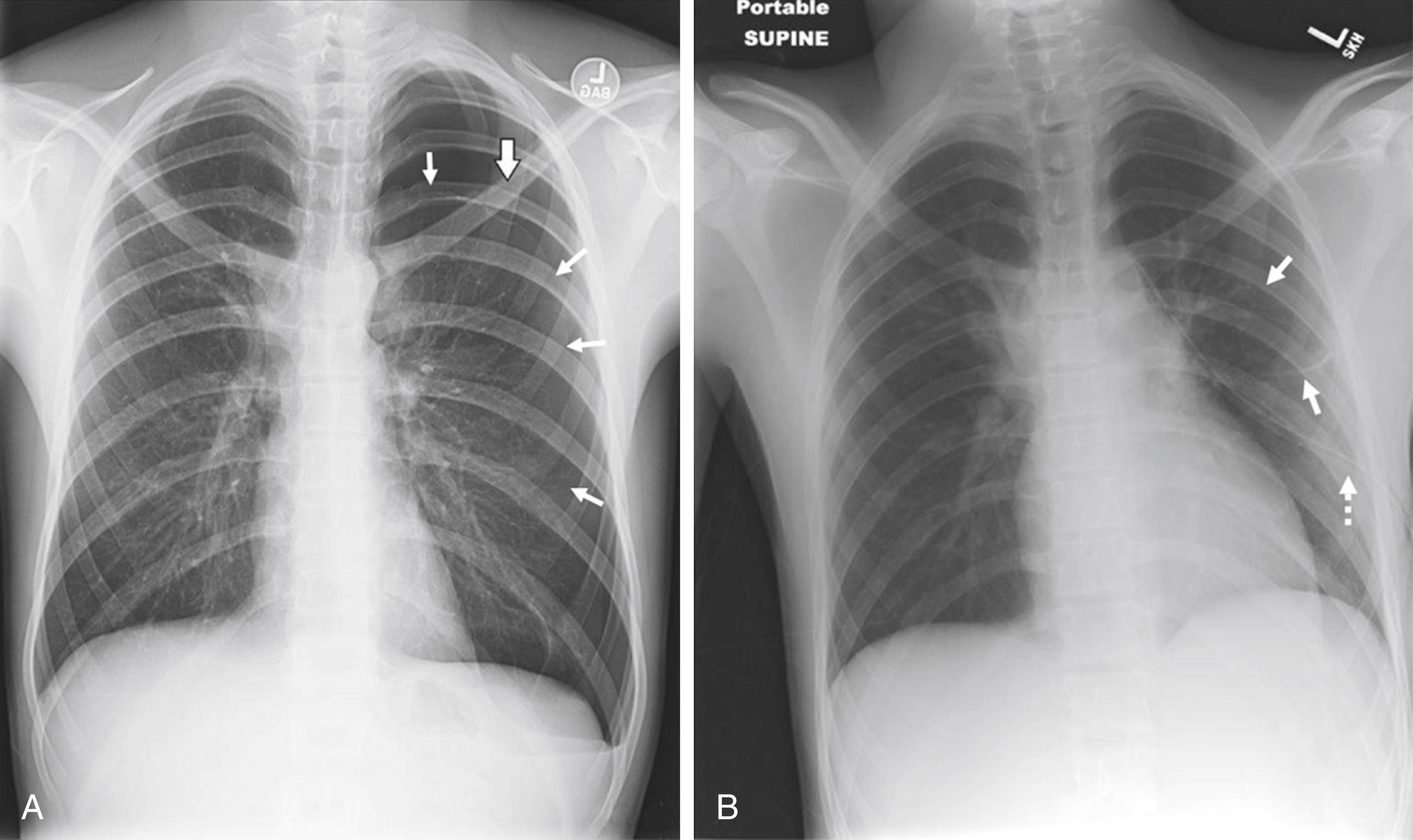Physical Address
304 North Cardinal St.
Dorchester Center, MA 02124
![]() Access the accompanying videos for this chapter online. Available on ExpertConsult.com .
Access the accompanying videos for this chapter online. Available on ExpertConsult.com .
Thoracoscopy is now the preferred approach for the operative treatment of primary spontaneous pneumothorax (PSP) due to ease of operation and patient tolerance, with minimization of postoperative pain and good results.
PSP is a pneumothorax that develops outside of an underlying preexisting pulmonary disease, such as malignancy or trauma, which is termed secondary spontaneous pneumothorax. The pathophysiology and treatment of secondary pneumothorax are complex and outside the scope of this chapter. PSPs usually present in teenagers with chest pain and shortness of breath. Chest auscultation may reveal decreased breath sounds on the affected side. When a significant pneumothorax is present, with or without tension physiology, there may be an associated tracheal deviation away from the affected side.
The vast majority of patients with a PSP are teenagers who present with stable vital signs and without signs and symptoms of tension pneumothorax. Although rare with PSP, if tension pneumothorax is present, immediate decompression with a chest tube or angiocatheter is necessary. In the majority of patients, the first step in PSP management is radiographic imaging including a posteroanterior and lateral chest radiograph ( Fig. 35-1 ). On occasion, a bleb is seen on the chest radiograph ( Fig. 35-2 ).


The next steps in management consist of obtaining intravenous access, and if the pneumothorax is sizable and/or the patient is symptomatic, then tube/catheter drainage is indicated. A recent prospective pilot study demonstrated that a trial of simple aspiration using a small-bore catheter predicts the need for further intervention. The drainage tube acts in three ways: (1) drains the extrapleural air, (2) achieves symptom resolution, and (3) acts as a test for tolerance of aspiration. If the pneumothorax resolves on radiograph after initial aspiration, the tube is clamped. If the pneumothorax returns, then the tube is unclamped, and the patient is scheduled for an operation during the hospitalization, preferably that day or the next day.
The indications for operative intervention of PSPs are in continued evolution. Periods of prolonged chest tube management are shifting toward a trend of more prompt operative intervention. Therefore, the most common indications for operation for PSP at this time are recurrence, persistent air leak, and inadequate immediate access to quality medical care. The use of chest computed tomography (CT) has not been consistently demonstrated to be of significant value in the initial operative decision making and is therefore not routinely used in our institution.
The thoracoscopic treatment of PSPs requires general anesthesia. Single-lung ventilation is usually employed either with contralateral mainstem intubation, a double-lumen endotracheal tube, or bronchial blockers. Recently, we have begun to employ tracheal intubation without lung isolation and simply let the gentle pneumothorax (from the insufflation) provide adequate ipsilateral lung collapse. This works well as only the lung parenchyma and the chest wall need complete visualization and total lung collapse is not a necessity. Adequate visualization can usually be obtained without physiologic consequence to the patient if the insufflating pressure is kept low.
Become a Clinical Tree membership for Full access and enjoy Unlimited articles
If you are a member. Log in here